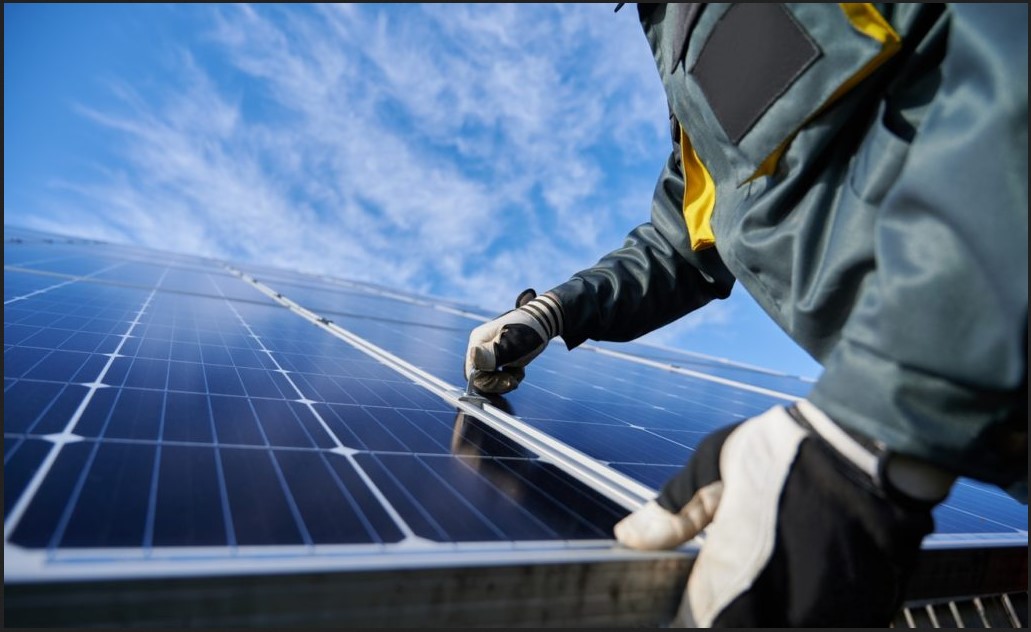Sun-Powered Homes: A Comprehensive Guide to Solar Panel Installation

Welcome to Sun-Powered Homes: A Comprehensive Guide to Solar Panel Installation! This guide is designed to provide you with the information you need to make an informed decision about installing solar panels in your home. We will cover the basics of solar energy, the different types of solar panels available, the cost of installation, and the benefits of going solar. We will also provide tips and advice on how to get the most out of your solar panel system. With this guide, you will be able to make an educated decision about whether or not solar energy is right for you.
The Benefits of Installing Solar Panels in Your Home: A Look at the Financial and Environmental Advantages
The installation of solar panels in a home can provide a number of financial and environmental benefits. Solar energy is a renewable resource that can be used to generate electricity, and the installation of solar panels can help to reduce energy costs and reduce the environmental impact of energy production.
From a financial perspective, the installation of solar panels can help to reduce energy costs. Solar energy is free, and the installation of solar panels can help to reduce the amount of electricity that needs to be purchased from a utility company. This can result in significant savings over time, as the cost of electricity from a utility company can be quite high. Additionally, many states offer incentives for the installation of solar panels, such as tax credits or rebates. These incentives can help to offset the cost of the installation, making it more affordable.
From an environmental perspective, the installation of solar panels can help to reduce the amount of carbon dioxide and other pollutants that are released into the atmosphere. Solar energy does not produce any emissions, and the use of solar energy can help to reduce the amount of energy that is produced from fossil fuels. This can help to reduce the amount of air pollution and greenhouse gases that are released into the atmosphere, which can help to improve air quality and reduce the effects of climate change.
Overall, the installation of solar panels in a home can provide a number of financial and environmental benefits. The installation of solar panels can help to reduce energy costs and reduce the environmental impact of energy production. Additionally, many states offer incentives for the installation of solar panels, which can help to make the installation more affordable. For these reasons, the installation of solar panels in a home can be a great way to save money and help to protect the environment.
Understanding the Different Types of Solar Panels and How to Choose the Right One for Your Home
Solar panels are an increasingly popular way to generate electricity for homes and businesses. With the right system, you can reduce your energy bills and even become energy independent. But with so many different types of solar panels on the market, it can be difficult to know which one is right for you.
The two main types of solar panels are monocrystalline and polycrystalline. Monocrystalline panels are made from a single crystal of silicon, while polycrystalline panels are made from multiple crystals. Monocrystalline panels are more efficient, meaning they can generate more electricity from the same amount of sunlight. They also tend to be more expensive than polycrystalline panels.
Another type of solar panel is thin-film. These panels are made from a thin layer of photovoltaic material, such as amorphous silicon. They are less efficient than monocrystalline and polycrystalline panels, but they are also cheaper and easier to install.
When choosing a solar panel for your home, it’s important to consider your budget, the amount of space you have available, and the amount of sunlight your location receives. Monocrystalline and polycrystalline panels are the most efficient, but they may be too expensive for some budgets. Thin-film panels are a good option for those on a tighter budget, but they may not generate as much electricity as the other types.
It’s also important to consider the type of mounting system you’ll need. Some panels require a roof-mounted system, while others can be mounted on the ground. You’ll also need to consider the type of inverter you’ll need to convert the electricity generated by the panels into usable power.
Finally, it’s important to research the warranties offered by different manufacturers. Many solar panels come with a 25-year warranty, but some may offer longer warranties. It’s important to make sure you understand the terms of the warranty before making a purchase.
By considering your budget, the amount of space you have available, the amount of sunlight your location receives, and the type of mounting system and inverter you’ll need, you can find the right solar panel for your home. With the right system, you can reduce your energy bills and even become energy independent.
Conclusion
In conclusion, Sun-Powered Homes: A Comprehensive Guide to Solar Panel Installation is an invaluable resource for anyone looking to install solar panels in their home. It provides a comprehensive overview of the process, from the initial research and planning stages to the installation and maintenance of the system. With its detailed instructions and helpful tips, this guide is sure to help anyone make the most of their solar panel installation.